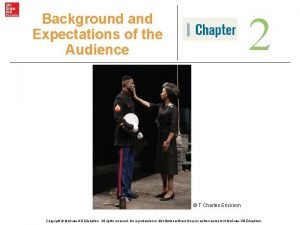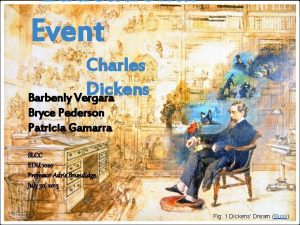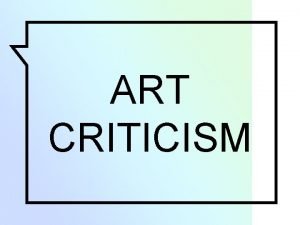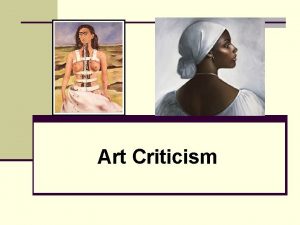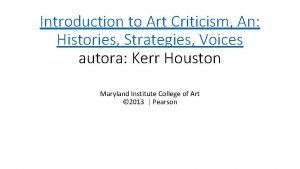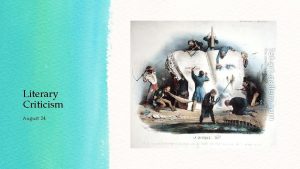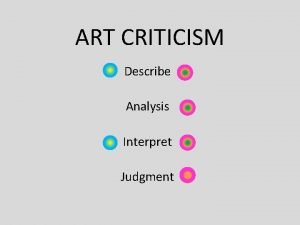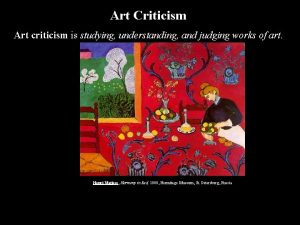Introduction to Art Criticism An Histories Strategies Voices















- Slides: 15

Introduction to Art Criticism, An: Histories, Strategies, Voices autora: Kerr Houston Maryland Institute College of Art © 2013 | Pearson

Understand the Complexities of Art Criticism in a Straightforward and Readable Manner An Introduction to Art Criticism offers a thorough overview of art criticism as it has been practiced since the 1700 s. The text is built around excerpts from the work of hundreds of historical and contemporary critics, including a substantial history of art criticism and chapters on the fundamental aspects of criticism and the formation of an individual voice. Learning Goals Upon completing this book, readers should be able to: Understand appreciate the rich history of art criticism as a field Analyze the “voice” of critics

Kerr Houston is a professor of art history, theory, and criticism at the Maryland Institute College of Art, where he has taught since 2002. At MICA regularly leads seminars on art criticism, and also teaches courses in the history of art history, in ancient art, and in Islamic art and architecture. He has written for a number of journals, including Camera Obscura, Gesta, Source: Notes in the History of Art, and Early Modern Visual Culture; he has also authored criticism for several magazines and newspapers. This is his first book.

Table of Contents BRIEF TABLE OF CONTENTS: Chapter 1: A History of Art Criticism Chapter 2: Description and Contextualization Chapter 3: Interpretation and Analysis Chapter 4: Judgment and Evaluation Chapter 5: Individual Critical Styles: Tone and Voice

It is conventional to explain the origins of criticism as following the establishment of regular art exhibitions by the Académie in the Louvre in 1737. . Yet the various ingredients that came together to form Salon criticism pre-existed the instigation of annual exhibitions. —Richard Wrigley, in The Origins of French Art Criticism, 1993 In his immortal Salons, Diderot. . . founded the criticism of painting. — Théophile Gautier, 1854 The Birth of a Genre

Pontos importantes 1. art criticism clearly has a lengthy history. 2. Men and women have been talking and writing about buildings, sculptures, and paintings with discernment—and so practicing art criticism, in one sense of the word— for thousands of years. Exemplos: 1. Greek geographer Strabo (sec 1, AC) pondered the effect of an ancient temple of Artemis that, “insofar as the size of the temple and the number of votives is concerned, falls short of the one in Ephesus; but, in its well-designed appearance and in the artistry visible in the fitting out of its sacred enclosure, is much superior. ” 2. Byzantine scholar named Procopius (sec 5, DC) recorded his reaction to the vast dome of Constantinople’s Hagia Sofia. “From the lightness of the building, ” he argued, “it does not appear to rest upon a solid foundation, but to cover the place beneath as though it were suspended from heaven by the fabled golden chain

Artemis of Ephesus The Ephesian Artemis, the "great mother goddess" also mentioned in the New Testament (Acts, 19), was extremely popular in the ancient world, as we might deduce from the fact that copies of her cult statue have been excavated in many parts of the Roman Empire. Templo em Éfeso – Turquia Templo de Ártemis, imaginado por Maarten van Heemskerck (1498 - 1574)

Procopius /

Xie He CHINESE PAINTER AND CRITIC Xie He, Wade-Giles romanization Hsieh Ho (flourished 6 th century), Chinese figure painter and critic who is best remembered for collating or inventing the famous “Six Principles” (liufa) of Chinese painting. The “Six Principles” introduce Xie’s Gu Huapin Lu (“Classified Record of Painters of Former Times”), which rates 27 painters in three classes of descending merit, each with three subdivisions. The “Six Principles” have inevitably acquired new and even different meanings through the ages, but generally they may be paraphrased as follows: creativity (or “spirit resonance”), structural use of the brush, proper representation of objects, specific coloration of those. . . (100 of 130 words)

Importantly, though, none of the writers mentioned would have described his work as art criticism—the term only emerges as a specific and self-conscious category of writing in the early eighteenth century. Taking that moment, then, as its point of departure, this chapter offers a largely linear history of the ways in which art criticism evolved as a discrete genre. Of course, it’s worth remembering that there has never been complete consensus regarding the nature or the aims of art criticism, and that the critics we’ll meet in this chapter felt very differently about the purposes of art and of art criticism.

Jonathan Richardson The earliest use of the term art criticism is often associated with the English painter and writer Jonathan Richardson the Elder. Between 1715 and 1719, Richardson authored several books, including An Essay on the Theory of Painting and An Essay on the Whole Art of Criticism.

Richardson’s writings appealed to an English middle class that was beginning to collect pictures and to practice the art of connoisseurship, as it gave them a set of terms with which to discuss art…

Jean-Baptiste Dubos in 1719, for example, the French politician and historian Jean-Baptiste Dubos published Réflexions critiques sur la poésie et sur la peinture (Critical Reflections on Poetry and Painting). Art criticism was beginning to coalesce as a distinct discipline. . . BUT: old paintings. . .

… the development of regular, public exhibitions of contemporary art in Paris and London in the mid 1700 s was a meaningful phenomenon. The Salons and Summer Exhibitions stoked public interest in contemporary art and prompted writers to think, in print, about what they had seen. Although each Salon was accompanied by an official livret, or catalog, which was sold inside the exhibition and included a brief entry on every work, writers unassociated with the Academy soon began to publish independent responses that were often issued in pamphlets sold outside the exhibitions, or in newspapers and magazines. Such responses both catered to and fostered public interest in the Salons and constituted an important step in the evolution of criticism. .

Aula 4: apresentações dos alunos
 4 steps in art appreciation
4 steps in art appreciation Two types of historical criticism
Two types of historical criticism Constructive vs destructive criticism
Constructive vs destructive criticism Formalism and new criticism example
Formalism and new criticism example Descriptive criticism vs prescriptive criticism
Descriptive criticism vs prescriptive criticism Doing life histories and biographical research
Doing life histories and biographical research Sacred seven mc
Sacred seven mc Reservation histories adalah
Reservation histories adalah Bryce pederson
Bryce pederson Where was the first permanent english colony
Where was the first permanent english colony North america, family histories, 1500-2000
North america, family histories, 1500-2000 A graduation poem for two
A graduation poem for two Men's voices ireland
Men's voices ireland Dust bowl pictures woman
Dust bowl pictures woman Hark ten thousand voices crying
Hark ten thousand voices crying Active voice examples
Active voice examples




